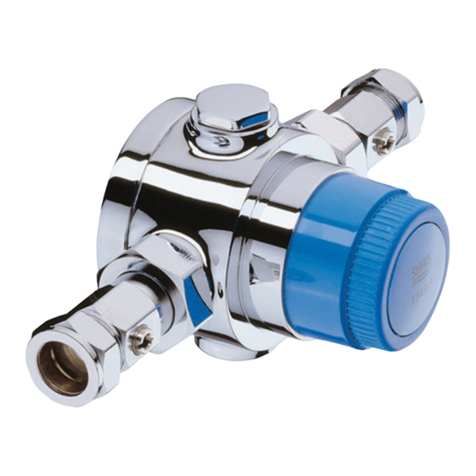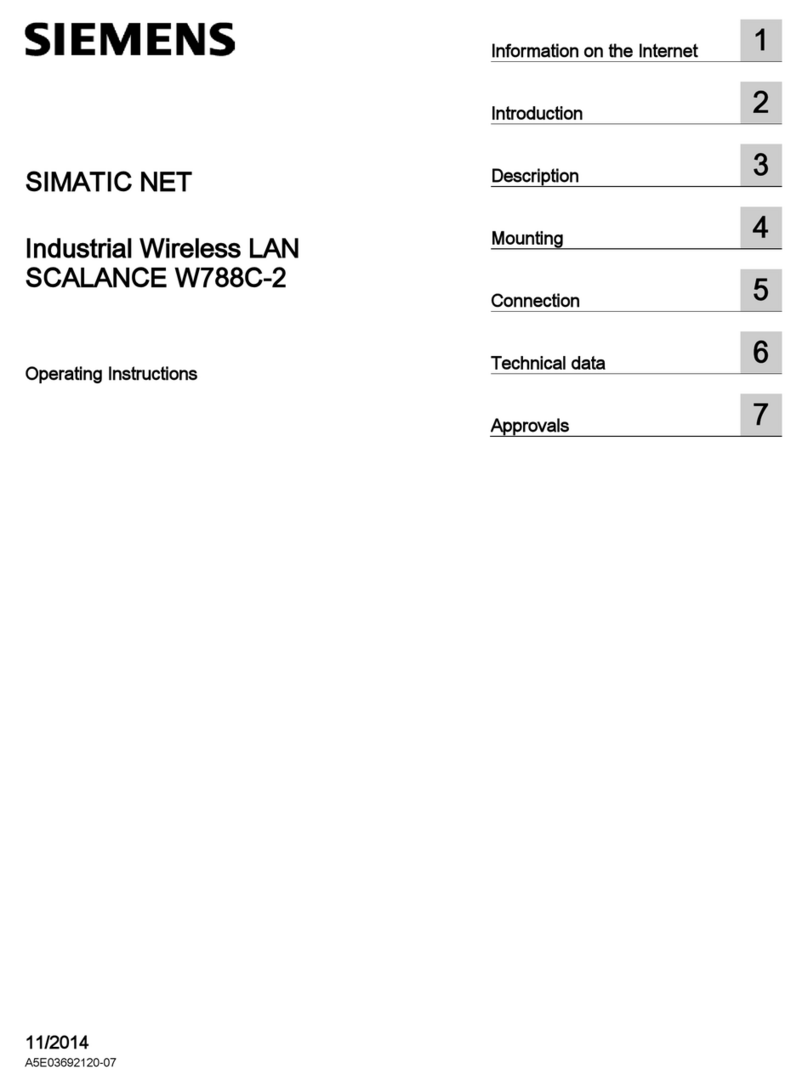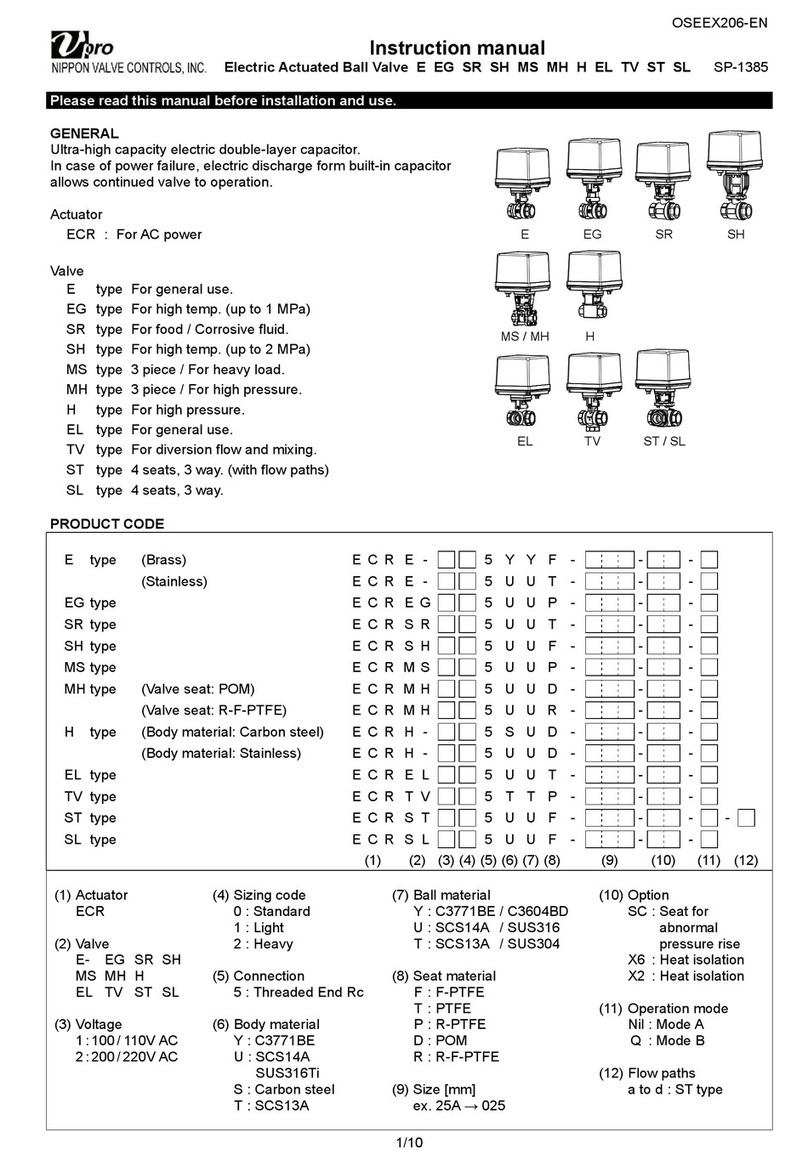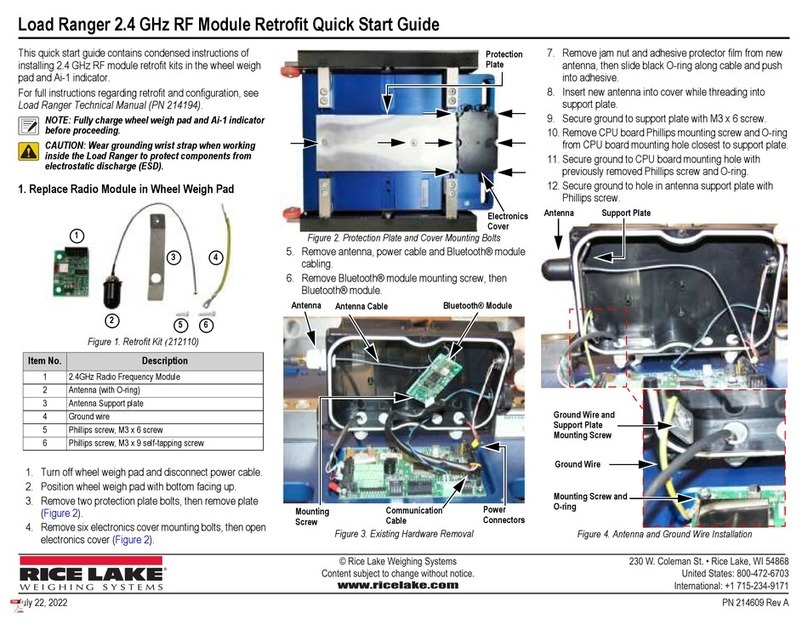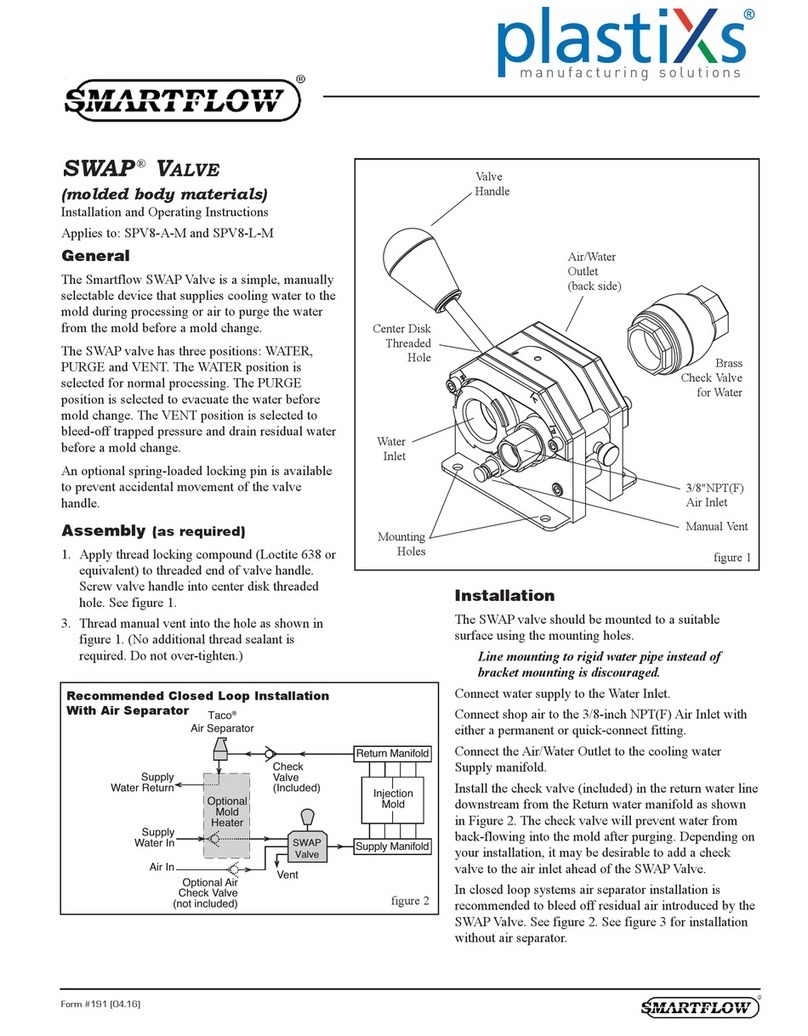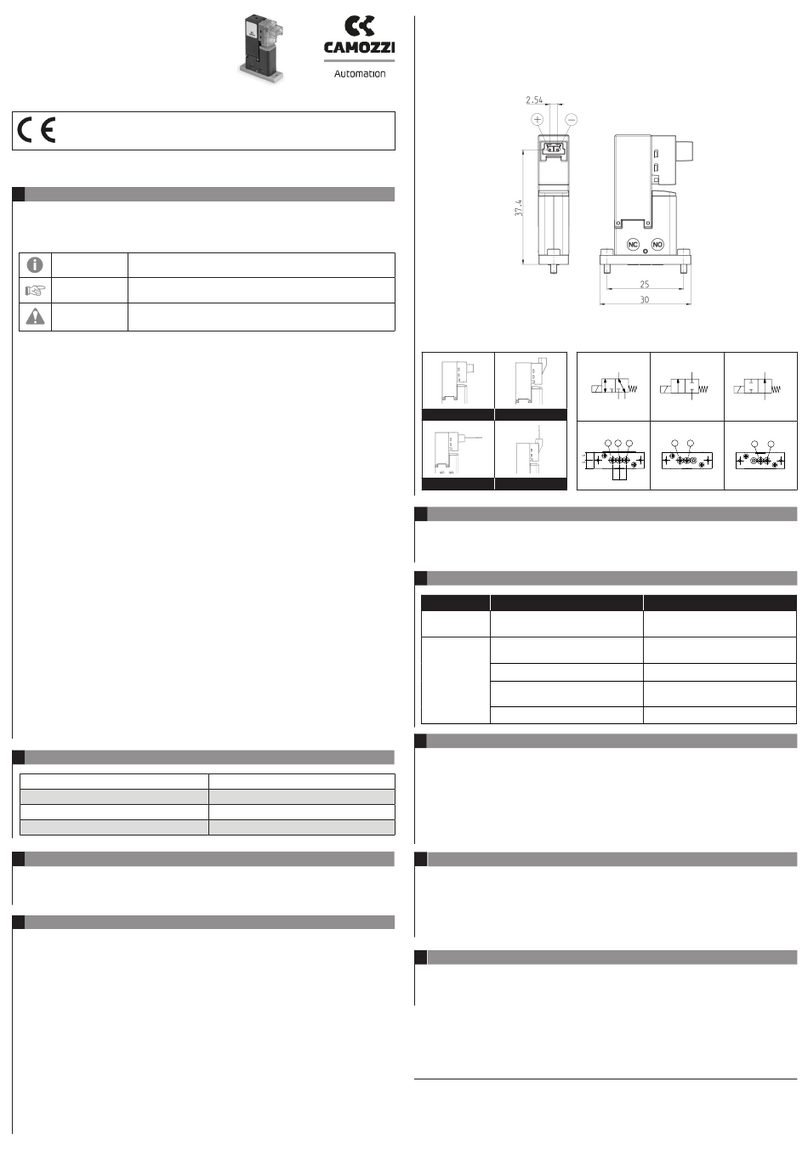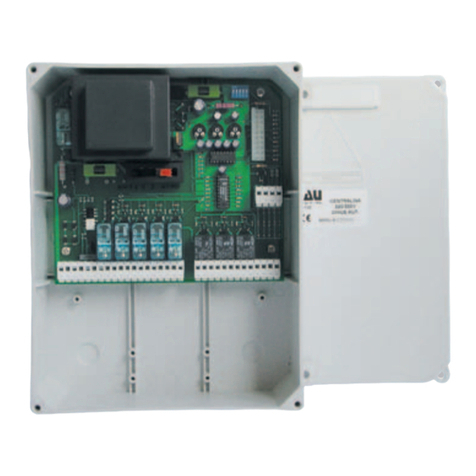Globalstar STX3 User manual

8545-0198-01 Revision 1.9 STX3 Users Manual
9/24/2020 Globalstar, Inc. Confidential and Proprietary
STX3 Users Manual
Globalstar Satellite Transmitter Module - Third Generation

8545-0198-01 Revision 1.9 STX3 Users Manual
9/24/2020 Globalstar, Inc. Confidential and Proprietary Page | i
Distribution Statements:
GLOBALSTAR CONFIDENTIAL AND PROPRIETARY INFORMATION – All data and information contained in this document are confidential and
proprietary to Globalstar, Inc.
WARNING – This document may contain technical data whose export is restricted by the Export Administration Act of 1979, as amended,
Title 50, U.S.C., App 2401 et seq. Violations of these export laws are subject to severe criminal penalties. Disseminate only in accordance
with such exportlaws.
Destruction Notice – Destroy by any method that will prevent disclosure of contents or reconstruction of the document.
Globalstar Inc.
1351 Holiday Square Blvd.
Covington, LA 70433
Globalstar reserves the right to make changes in technical and product specifications without prior notice.
Copyright© 2020 Globalstar® Incorporated. All rights
reserved.
Globalstar® is a registered trademark of Globalstar Incorporated.
All other trademarks and registered trademarks are properties of their respective owners.
Printed in the United States of America

8545-0198-01 Revision 1.9 STX3 Users Manual
9/24/2020 Globalstar, Inc. Confidential and Proprietary Page | ii
Table of Contents
1Introduction ......................................................................................................................................................................................1
1.1 Purpose.....................................................................................................................................................................................1
1.2 Applicable Documents.............................................................................................................................................................. 1
1.3 Description ............................................................................................................................................................................... 1
2Application ........................................................................................................................................................................................2
2.1 Theory of Operation .................................................................................................................................................................2
2.2 Block Diagram...........................................................................................................................................................................4
3Physical Characteristics .....................................................................................................................................................................5
4Reference Design ..............................................................................................................................................................................9
4.1 Antenna Requirements ..........................................................................................................................................................10
1.1. Trace and Cable Losses........................................................................................................................................................... 10
4.2 Effect of Plastic on Radiation.................................................................................................................................................. 11
4.3 Power Supply Design ..............................................................................................................................................................11
4.4 Bill of Materials.......................................................................................................................................................................12
4.5 PCB Layout..............................................................................................................................................................................13
5Application Programming Interface ................................................................................................................................................ 15
5.1 Serial Port ............................................................................................................................................................................... 15
5.2 Serial Packet Mode................................................................................................................................................................. 15
5.2.1 Serial Packet Format .......................................................................................................................................................... 16
5.2.2 Serial Packet Commands....................................................................................................................................................16
5.2.2.1 Send Data (0x00) .......................................................................................................................................................16
5.2.2.2 Query Electronic Serial Number (ESN) (0x01) ........................................................................................................... 17
5.2.2.3 Abort Transmission (0x03) ........................................................................................................................................17
5.2.2.4 Query Bursts Remaining (0x04)................................................................................................................................. 17
5.2.2.5 Query Firmware Version (0x05) ................................................................................................................................18
5.2.2.6 Setup (0x06) .............................................................................................................................................................. 18
5.2.2.7 Query Setup (0x07)....................................................................................................................................................19
5.2.2.8 Query Hardware Version (0x09)................................................................................................................................19
5.2.2.9 CW Test Mode (0xFC 0x01) ....................................................................................................................................... 20
5.2.2.10 Send Test Packet (0xFC 0x02).................................................................................................................................... 20
5.2.2.11 Modulation Test Mode (0xFC 0x03) .......................................................................................................................... 21
5.3 Example CRC calculation routines for serial packets..............................................................................................................22
5.4 AT commands.........................................................................................................................................................................24
6Test Modes......................................................................................................................................................................................27

8545-0198-01 Revision 1.9 STX3 Users Manual
9/24/2020 Globalstar, Inc. Confidential and Proprietary Page | iii
7REGULATORY APPROVAL ................................................................................................................................................................28
7.1 Radio Astronomy Site Avoidance ...........................................................................................................................................28
7.2 Regulatory Notices .................................................................................................................................................................28
8Appendix A – Antenna Manufacturers............................................................................................................................................31

8545-0198-01 Revision 1.9 STX3 Users Manual
9/24/2020 Globalstar, Inc. Confidential and Proprietary Page | 1
1Introduction
1.1 Purpose
This document describes the physical, electrical, and functional characteristics of the STX3 satellite transmitter module. The
information contained in this document is intended to provide the end user with the necessary technical information required
to use the module in a custom application.
This document is intended to be used by engineers and technical management and assumes a general knowledge of basic
engineering practices by the user.
Please note that Globalstar is only responsible for ensuring that the STX3 meets the published manufacturing specifications
described herein.
1.2 Applicable Documents
STX-3 Reference Design
1.3 Description
The STX 3 is a simplex Satellite transmitter designed to send small packets of user defined data to a network of low earth
orbiting (LEO) satellites using the Globalstar simplex satellite network. The received data is then forwarded to a user defined
network interface that may be in the form of an FTP host or HTTP host where the user will interpret the data for further
processing.
The STX3 is a surface mount module designed to attach to a user defined host PCB which must provide power, an RF
connection to the transmit antenna, and communications with a host processor which will control the operation of the STX3.
All electrical connections are provided via the castellated pads on the perimeter of the PCB.
The STX3 is a small, low-profile device with the dimensions shown below.
Figure 1 (dimensions in inches)

8545-0198-01 Revision 1.9 STX3 Users Manual
9/24/2020 Globalstar, Inc. Confidential and Proprietary Page | 2
2Application
2.1 Theory of Operation
The STX3 operates on the Globalstar LEO satellite network. LEO (Low Earth Orbit) means that there are a number of satellites in low
earth orbit that constantly orbit the planet and can communicate with Globalstar devices that are within range of its current
position.
Figure 2 LEO Constellation
Since the satellite position is constantly changing, simplex devices on the ground will transmit (with no knowledge of any of the
satellites locations) and the transmission may be received by one or more satellites. These satellites will then relay the message to
the nearest satellite gateway as shown below. Once received by the satellite gateway, the simplex message will be delivered to the
simplex gateway where redundant messages are discarded and the data from the message is sent to the OEM via the Internet.
Figure 3 Simplex Messaging

8545-0198-01 Revision 1.9 STX3 Users Manual
9/24/2020 Globalstar, Inc. Confidential and Proprietary Page | 3
Messages are composed of 1 or more 9-byte payloads. The STX3 can only transmit 9-byte on-air messages, so user payloads greater
than 9 bytes will require multiple on-air packets to be transmitted for each user payload.
There are brief periods of time where there is no satellite in range of the simplex transmitters due to obstructions and/or satellite
coverage geometry. Since a simplex device has no way of knowing if a transmitted message has been successfully received, the STX3
device is designed to send multiple (redundant) transmissions for each message being sent over the Globalstar network. The default
value for the number of redundant transmissions per message is 3. This means that each message sent to the STX3 will be
transmitted 3 times. Each transmission will contain the exact same data payload. The redundant transmissions of each message will
be sent on a randomized 5-minute nominal interval.
The transmission sequence for a single-packet message using the default setting of 3 redundant transmissions is shown below.
The transmission sequence for a two-packet message using the default setting of 3 redundant transmissions is shown below.
For normal conditions where the transmitter has an open view of the sky, this will result in a better than 99% chance that the
message will be received.

8545-0198-01 Revision 1.9 STX3 Users Manual
9/24/2020 Globalstar, Inc. Confidential and Proprietary Page | 4
2.2 Block Diagram
The basic elements of a design utilizing the STX3 simplex transmitter are shown below.
Figure 4
The STX3 provides separate power supply inputs. The digital power supply input (VDIG) is a low power input which powers the
digital portion of the STX3. This provides the capability to leave the STX3 in a low power consumption state when the transmitter RF
section is idle. The RF power supply input is a high power input which is only required while the STX3 is transmitting a data packet.
Since the transmission duty cycle is very low, this supply may be turned off the majority of the time and only active during the
transmission of a packet. Due to the random nature of the burst transmissions, and open collector output (PWR_EN) is provided by
the STX3 which can directly control the high current supply for VRF. This will ensure that the RF power supply is enabled for the
minimum amount of time to complete each transmission. It may also be monitored by the host to determine when each burst has
been completed without the need to query the STX3 via the serial host interface.

8545-0198-01 Revision 1.9 STX3 Users Manual
9/24/2020 Globalstar, Inc. Confidential and Proprietary Page | 5
3Physical Characteristics
Figure 5 Top View

8545-0198-01 Revision 1.9 STX3 Users Manual
9/24/2020 Globalstar, Inc. Confidential and Proprietary Page | 6
Figure 6 Recommended PCB footprint layout (dimensions in inches)

8545-0198-01 Revision 1.9 STX3 Users Manual
9/24/2020 Globalstar, Inc. Confidential and Proprietary Page | 7
PIN
NAME
TYPE
Description
1
CTS
Output
5V tolerant, weak internal pull-up, may be pulled up to 5V max external
2
RTS
Input
5V tolerant, weak internal pull-up
3
RESERVED
No Connect
Do NOT connect
4
NC
No Connect
5
NC
No Connect
6
RESERVED
No Connect
Do NOT connect
7
VRF
Power In
3.0 to 3.6 Volts, 350 mA max load @ 3.3V, ripple 50 mV (pk-pk) max
8
GND
Ground
9
GND
Ground
10
GND
Ground
11
GND
Ground
12
GND
Ground
13
GND
Ground
14
RFOUT
Output
50 ohm single ended antenna connection, use impedance matched trace
15
GND
Ground
16
GND
Ground
17
GND
Ground
18
GND
Ground
19
GND
Ground
20
GND
Ground
21
RESERVED
No Connect
22
RESERVED
No Connect
23
RESERVED
No Connect
24
PWR_EN
Output
Open collector output to control VRF supply. VRF must be stable within 25ms after assertion.
25
NC
No Connect
26
TxD
Output
5V tolerant, weak internal pull-up, may be pulled up to 5V max external
27
RxD
Input
5V tolerant, weak internal pull-up
28
Test2
Input
internal pull-up, only drive with open collector or ground,
no external voltage to be applied
29
Test1
Input
internal pull-up, only drive with open collector or ground,
no external voltage to be applied
30
RESERVED
No Connect
Do NOT connect
31
RESET
Input
Only drive with open collector, no external voltage to be applied
32
VDIG
Power In
3.0 to 5.0 Volts, 50 mA max load @ 3.3V, ripple 50 mV (pk-pk) max

8545-0198-01 Revision 1.9 STX3 Users Manual
9/24/2020 Globalstar, Inc. Confidential and Proprietary Page | 8
Parameter
Test Conditions
Min
Typ
Max
Unit
TX output power
25º C, Vcc=Vrf=3.3 volts, 50 ohm load
18.75
19.0
19.75
dB
Transmit mode supply current
-30 to 85º C, Vcc=Vrf=3.3 volts, 50 ohm load
325
390
475
mA
Active mode supply current
-30 to 85º C, Vcc = 3.3 volts
2
2.25
3
mA
Standby mode supply current
-30 to 85º C, Vcc = 3.3 volts
3
12
55
µA
Sleep mode supply current
-30 to 85º C, Vcc = 3.3 volts
3
7
50
µA

8545-0198-01 Revision 1.9 STX3 Users Manual
9/24/2020 Globalstar, Inc. Confidential and Proprietary Page | 9
4Reference Design
The following is a reference design which illustrates a typical implementation of a simplex transmitter device using the STX3 and a
commercially available antenna. OEM designs are required to follow these guidelines with respect to the antenna configuration and
layout. Physical layout, PCB size and stack-up, component part numbers, etc. may vary. However, the following conditions must be
met in order to comply with the STX3 modular grant.
1. The antenna used must be a patch antenna.
2. The antenna peak gain must not exceed 5.1 dB.
3. The antenna must be passively connected to the RF output of the STX3 using a 50-ohm nominal impedance printed circuit
trace. No connectors are allowed on the antenna connection.
If any of the above conditions are not met, the OEM device must be submitted for FCC Part 25 testing (and any additional
certification testing required in the intended geographical service area).
In addition, it is strongly recommended that the OEM design include ESD protection circuitry as specified below.The circuit below
provides a DC blocking capacitor as well as a shunt inductor to short any static discharge from the antenna to ground.
The values and part numbers below have been tested and provide ESD protection with minimal insertion loss.
Figure 7 Reference Design Schematic

8545-0198-01 Revision 1.9 STX3 Users Manual
9/24/2020 Globalstar, Inc. Confidential and Proprietary Page | 10
4.1 Antenna Requirements
The ideal antenna is a ceramic patch that has left hand circular polarization. This antenna should have a gain of between -1dB and
5.1dB in the spatial area between 25 degrees and 90 degrees elevation.
The STX3 has Modular Certification from the FCC (USA) and Industry Canada (Canada) when used with an antenna that meets the
specifications above. This means that, in general, no further FCC Part 25 testing or IC testing is required when using an approved
antenna (recommended antennas are listed in Appendix A of this document) in accordance with the Globalstar-specified
implementation requirements listed in this document. Note however, that regulatory requirements are subject to change at any
time, and it is the responsibility of the integrator to ensure that the product is fully compliant with all applicable regulations in
whatever markets the integrator is selling the product.
Final installation must be in compliance with 25.213. The antenna installation and operating configuration of this transmitter must
satisfy MPE categorical Exclusion Requirements of 2.1091. The antenna used for this transmitter must be installed to provide a
separation distance of at least 20 cm from all persons and must not be collocated or operating in conjunction with any other
antenna or transmitter.
1.1.Trace and Cable Losses
The Antenna port (Pin 22) is designed to interface to a 50 Ohm antenna. This connection should feed to the antenna by means of a
50 Ohm impedance trace on the circuit board. The following example impedance calculation is for a co-planar waveguide trace on
the top layer of a standard 0.063” FR-4 2-layer board material (60-mil core material) with a dielectric εr ≈ 4.6 and 1/2 oz. Copper.

8545-0198-01 Revision 1.9 STX3 Users Manual
9/24/2020 Globalstar, Inc. Confidential and Proprietary Page | 11
Figure 8 Controlled Impedance Calculation
4.2 Effect of Plastic on Radiation
The design of the enclosure must take into consideration the proximity of any material to the antenna. There should be no
conducting material over the antenna. The enclosure must also provide a minimum of 100 mils clearance around the antenna to
minimize the effect of the enclosure on the antenna performance.
The final design should include a measurement of the antenna performance when inside the enclosure. The enclosure may affect
the performance of the antenna by changing the characteristic impedance of the antenna (de-tuning).
A matching network may be required in the antenna feed to offset the effect of the enclosure and ensure proper performance of the
antenna. Values for matching components are dependent on the user specific implementation.
Figure 9 Antenna Matching Network
The measured return loss should be maintained below -10dB across the operating frequency range of 1610-1620 MHz.
4.3 Power Supply Design
The power supply is sourced by a 3.0V - 5.0V input (VBATT). The digital supply (VDIG) is provided directly from the VBATT supply.
VDIG provides the standby power for the STX3. In standby mode, the STX3 will respond to serial commands via the serial port.
For the high-current active mode, the RF supply (VRF) is provided by a buck/boost switching power supply which can provide the
high current required for transmissions over the satellite network. The open collector output of the STX3 (PWR_EN) is used to turn
on the high-current supply during transmissions. This allows the circuit to maintain a low stand-by sleep current when not actively
transmitting. The VRF power must be stable within 25ms after PWR_EN is activated.
The VBATT supply must be capable of providing up to 475 mA of current during the packet transmissions.

8545-0198-01 Revision 1.9 STX3 Users Manual
9/24/2020 Globalstar, Inc. Confidential and Proprietary Page | 12
4.4 Bill of Materials
Designator
Quantity
Manufacturer Part Number
Manufacturer
C1
1
GRM155R71A104KA01D
MURATAELEC
C15
1
EMK316BJ226ML-T
TAIYOYUDEN
C16
1
TMK212BBJ106KG-T
TAIYOYUDEN
C39
1
GRM033R61A104ME15D
MURATAELEC
C5
1
0603ZD474KAT2A
AVXCORP
E1
1
PA25-1615-025SA
SPECTRUMCO
L1
1
BLM18HG471SN1D
MURATAELEC
L401
1
SRU5018-100Y
BOURNS
Q3
1
IRLML6401TRPBF
INTERNATIONAL RECTIFIER
R4
1
ERJ-1GEJ105C
PANASONIC
R5
1
RK73B1HTTC103J
KOASPEEREL
R6
1
#N/A
#N/A
U1
1
2200-0333-01 (STX3)
Globalstar
U401
1
TPS63001DRCR
TEXASINSTR

8545-0198-01 Revision 1.9 STX3 Users Manual
9/24/2020 Globalstar, Inc. Confidential and Proprietary Page | 13
4.5 PCB Layout
The design has been laid out on a two-layer PCB consisting of a 60-mil core of FR-4 with ½ ounce copper clad.
Figure 9 Component Side

8545-0198-01 Revision 1.9 STX3 Users Manual
9/24/2020 Globalstar, Inc. Confidential and Proprietary Page | 14
Figure 10 Antenna Side
Figure 11 Top and Bottom Views

8545-0198-01 Revision 1.9 STX3 Users Manual
9/24/2020 Globalstar, Inc. Confidential and Proprietary Page | 15
5Application Programming Interface
5.1 Serial Port
A half-duplex (0-3.0V) TTL asynchronous serial port (UART) is the primary interface to the user equipment. The serial port operates
with the serial parameters of 9600bps, 8 data bits, no parity, 1 stop bit.
The RX data input and the RTS inputs are 5V tolerant. The TX data and CTS outputs are 0-3.0V TTL.
RS232 input levels are not supported. RS232 data must be converted to TTL before being sent to the unit.
Each command from the DTE to the modem (STX) is sent in a serial packet. Upon receiving the command, the modem answers to the
DTE and, if applicable, executes the command.
In order to wake up the modem (STX) from sleep mode and to indicate the end of the serial packet, each serial packet must be
framed by activating RTS before the first byte of the command and deactivating RTS after the last byte of the command.
5.2 Serial Packet Mode
This mode is the legacy mode of operation as implemented in the STX2 which consists of binary data packets.

8545-0198-01 Revision 1.9 STX3 Users Manual
9/24/2020 Globalstar, Inc. Confidential and Proprietary Page | 16
5.2.1 Serial Packet Format
Preamble
Fixed pattern 0xAA
Length
Total number of bytes in the serial packet including the preamble
Command
Command type (See Table 5 Serial Packet Type). Responses to
commands carry the same command type as the command that
initiated the answer
Data
Data associated with the command or answer
CRC
16 bit CRC
Figure 12 Serial Packet Format
5.2.2 Serial Packet Commands
For all serial packet commands as described below:
•AA is the Preamble.
•NN is the Length.
•XX is an unspecified byte value
•CLSB is the least significant CRC byte
•CMSB is the most significant CRC byte
•If an improperly formatted command is received, the STX3 will return a NAK response:
AA 05 FF A1 CB
5.2.2.1 Send Data (0x00)
The Send Data command requests the STX3 to send from 1 to 144 data bytes over the Globalstar Simplex network.
0x00
header
len
cmd
payload
1
payload
2
payload
3
..
payload
N
CRC1
CRC2
AA
NN
00
XX
XX
XX
XX
XX
CLSB
CMSB
Example Command: AA 0E 00 01 02 03 04 05 06 07 08 09 BE E8
Response: AA 05 00 D9 C4
The example above commands the STX3 to send 9 bytes of user defined data over the Globalstar Simplex network. If the STX3
receives a properly formatted Send Data command, it returns an acknowledge response as shown above. If the command is not
properly formatted, it will return the NAK response AA 05 FF A1 CB.
Other manuals for STX3
2
Table of contents
Other Globalstar Control Unit manuals
Popular Control Unit manuals by other brands

Xsens
Xsens MTi 1 Series Integration manual
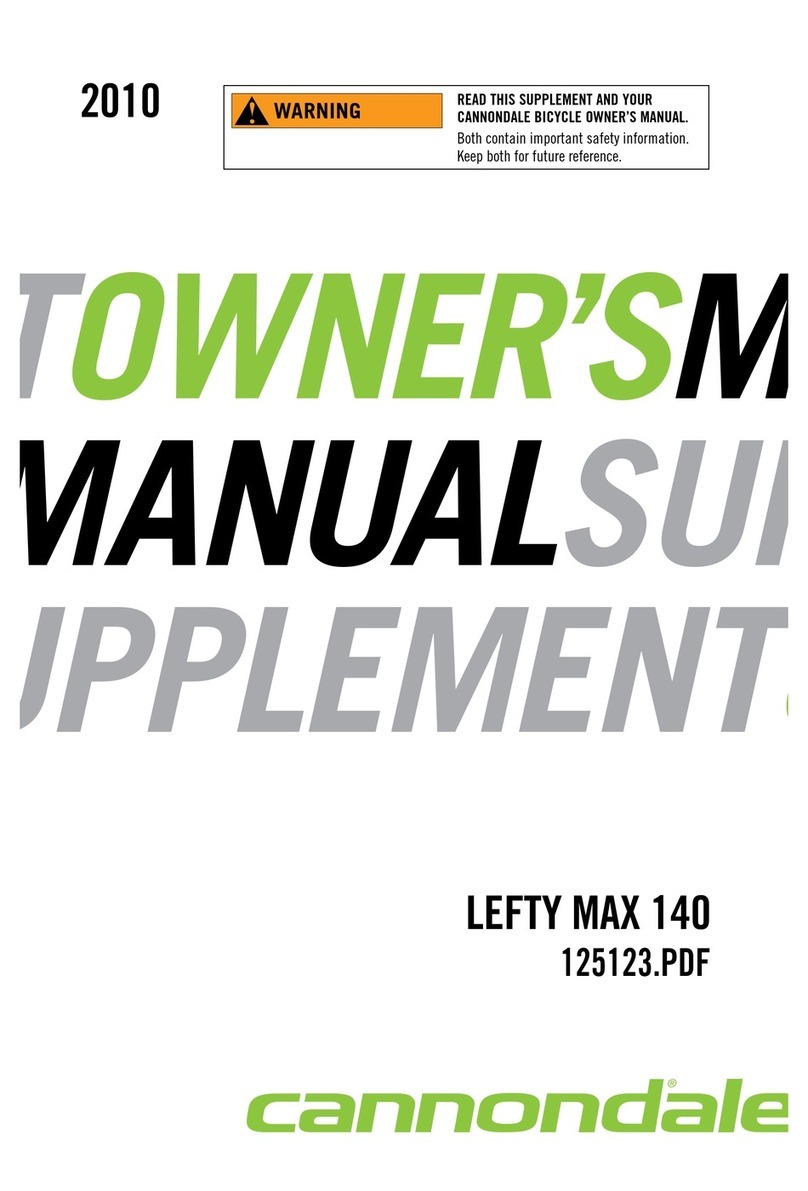
Cannondale
Cannondale LEFTY MAX 140 owner's manual
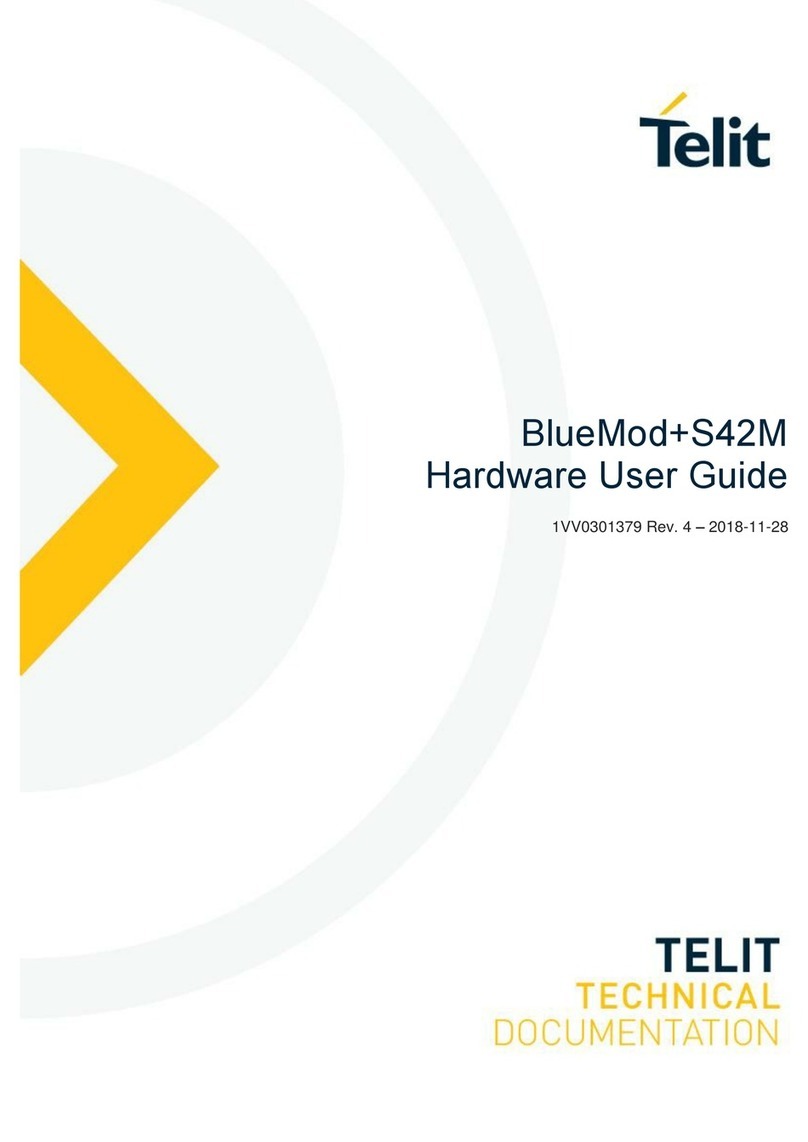
Telit Wireless Solutions
Telit Wireless Solutions BlueMod+S42M Hardware user's guide
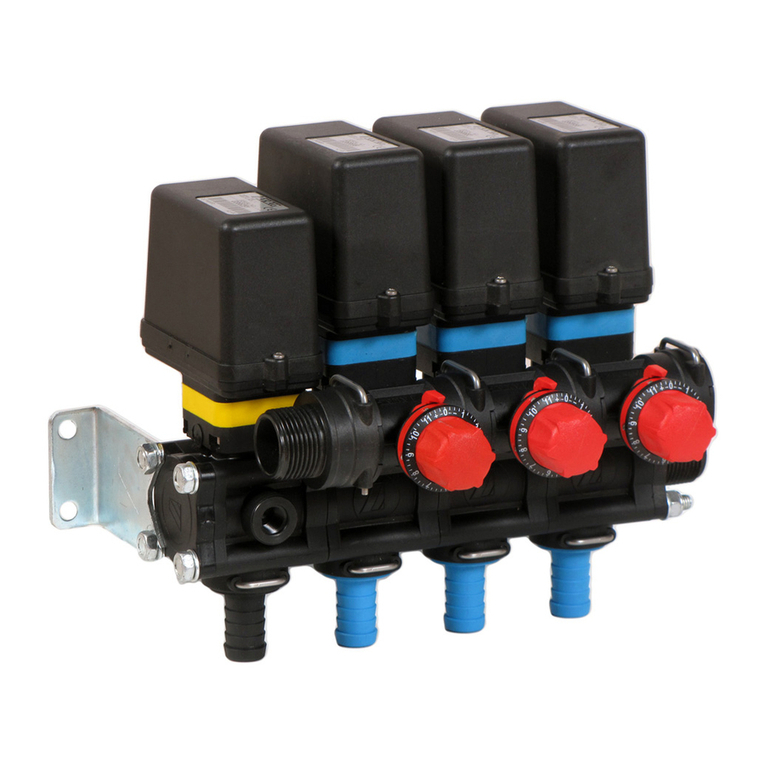
ARAG
ARAG 463 Series Directions for installation, use and maintenance

Leuze electronic
Leuze electronic AC-CPB quick start guide

SSS Siedle
SSS Siedle ECE 602-0 Product information




